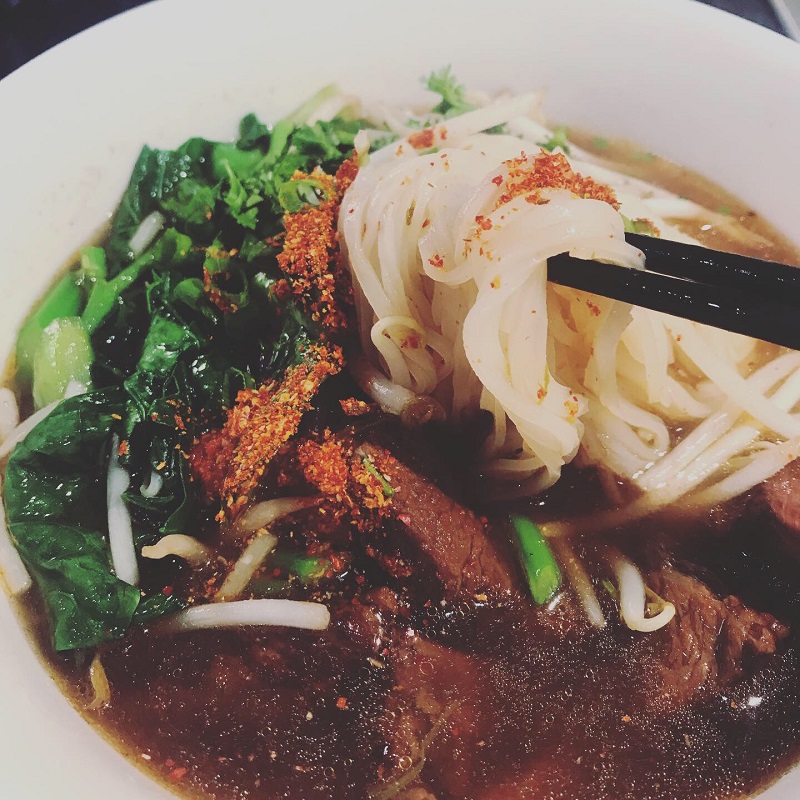Ok, who doesn’t like a piping hot bowl of tender beef, rich savory broth, and noodles? On those cold and rainy evenings, there is no better cozy, comfort food. I’m developing cravings just thinking about it. Ok, so in Los Angeles, “cold and rainy” is about 8 days a year so fortunately my noodle soup craving isn’t tied to weather 😆
If you are a noodle lover like me, you have to try making this yourself. Don’t be discouraged by what looks like a very long recipe. It’s actually pretty easy, and this post looks foreboding only because there is a lot of details to share.
Honestly, the hardest part of this dish might be to find galangal, which is one of the aromatics used in the soup. Then again, these days I’ve found that a lot of Chinese grocery stores carry it. So if you do find it, buy it and freeze whatever you don’t use. And if you plan on making a lot of Thai food (particularly curries and soups), this will be an important ingredient to have. Before you freeze galangal, I recommend you cut it up into 1/4″ slices (you do not need to peel it). As you will see, galangal has a very dense texture (so use a good knife), and if you try slicing it while frozen… well good luck. If you can’t find galangal, just leave it out. There’s really no good substitute for it.
For the beef, you can use any kind of stewing beef. Pot roast is a good one. Just don’t go crazy and trim off all the fat, otherwise the beef will be dry. Cut the beef into bite size chunks (if it isn’t already) and brown it first. You can probably use short ribs for this, although it will result in a fattier soup; I think I will have to try this next time.
Regarding cilantro – most Thai dishes such as this (and many curries & marinades) actually use the cilantro roots. It is by far the most aromatic part of the plant, but seems to be impossible to find at any supermarket here (Asian or otherwise). If you do find cilantro that still has roots on it, marvel at its rarity and go get a lotto ticket after you buy it. If you aren’t using it right away, you can freeze the roots for later. I am always on the look out for cilantro with the dang roots on it.
Once you brown the beef, the broth comes together easily. Just toss everything (water, beef, any accumulated juices, sauces, seasonings, and aromatics) in a big enough pot, bring to a boil, then cover and simmer until the beef is tender – usually 2-3 hours.
Once you are ready to serve, get the noodles and vegetables ready.
For the vegetables, I use either Chinese broccoli (Gai Lan) or Chinese spinach (On Choy), and bean sprouts. You can also use Bok Choi, which is easier to find. In a pinch, you can use the humble broccoli or fresh spinach (whole ones with the stems, not the ones from a bag for salads).
For the noodles, I use fresh thin noodles (the type you use in Pho), which is my personal preference. There are lots of noodles to choose from, varying in sizes (thick, thin, angel hair, vermicelli), to composition (egg noodle vs rice noodle vs glass noodle), etc. Pick whatever noodle you like. In Thailand, you’d be asked for your preference.
For the final assembly, portion out the noodles and vegetables for each bowl (serving), and blanch them in a separate pot of boiling water. If you have a noodle strainer, this is quick and easy (they are super cheap at Asian grocery stores and about $10 online). Using a noodle strainer, portion by portion, I blanch the noodles first for 5 seconds (dry noodles will take a little longer), strain, and place the noodles into a bowl. Then I do the Chinese broccoli stems for maybe 5 seconds, then add the leaves for 5 more seconds, then sprouts for 3 more seconds. Strain and place on top of the noodles. Then add some pieces of beef from the broth, and ladle the broth through a sieve over top in the bowl. As you can imagine, it helps to have everything organized and within reach as all of this comes together quickly.
To serve, present your guests with the bowl of noodle, and an array of Thai condiments (read below) so that each person can fiddle with the seasonings until it is perfect to their liking. If you have no guests, portion the noodles and vegetables out and keep in the fridge for quick and easy access next meal 😉

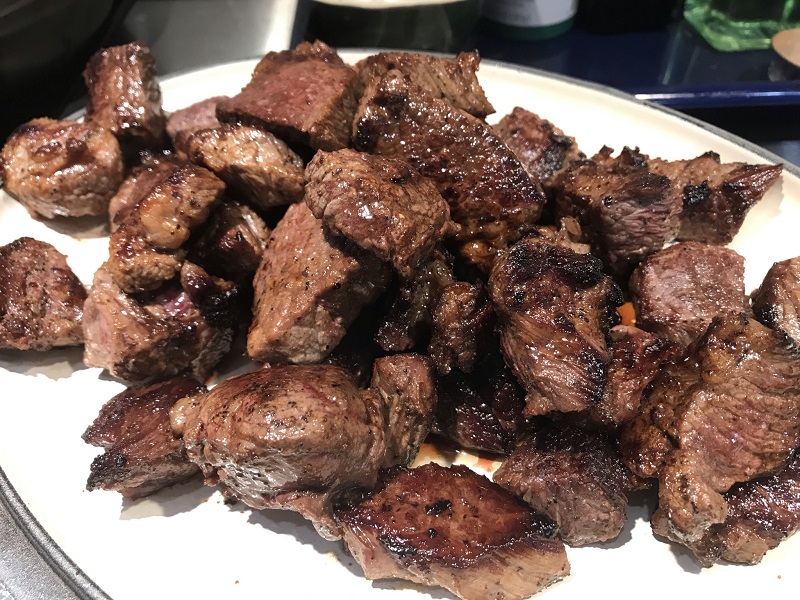
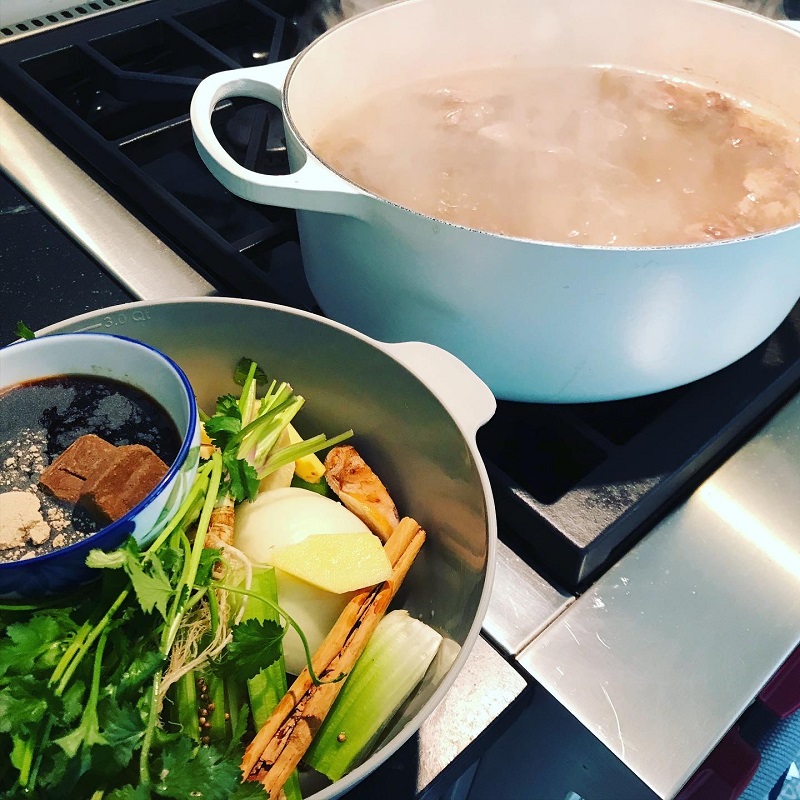
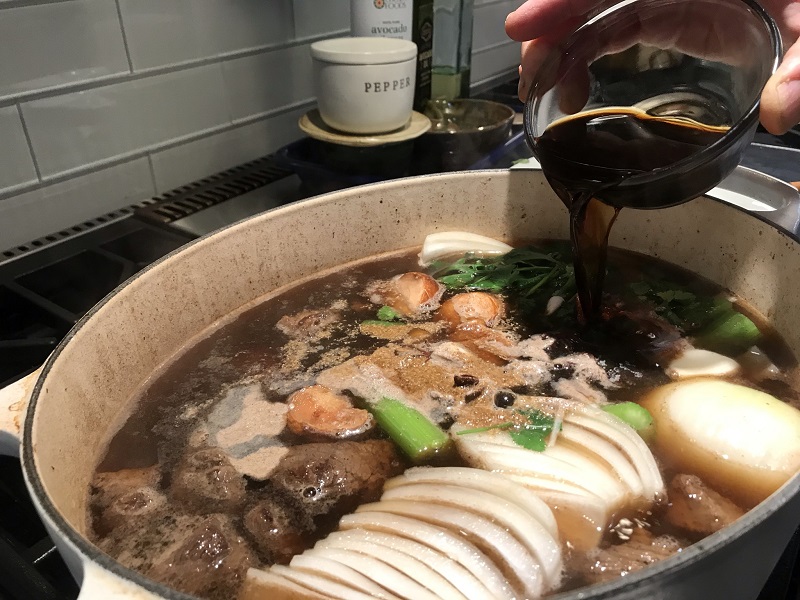
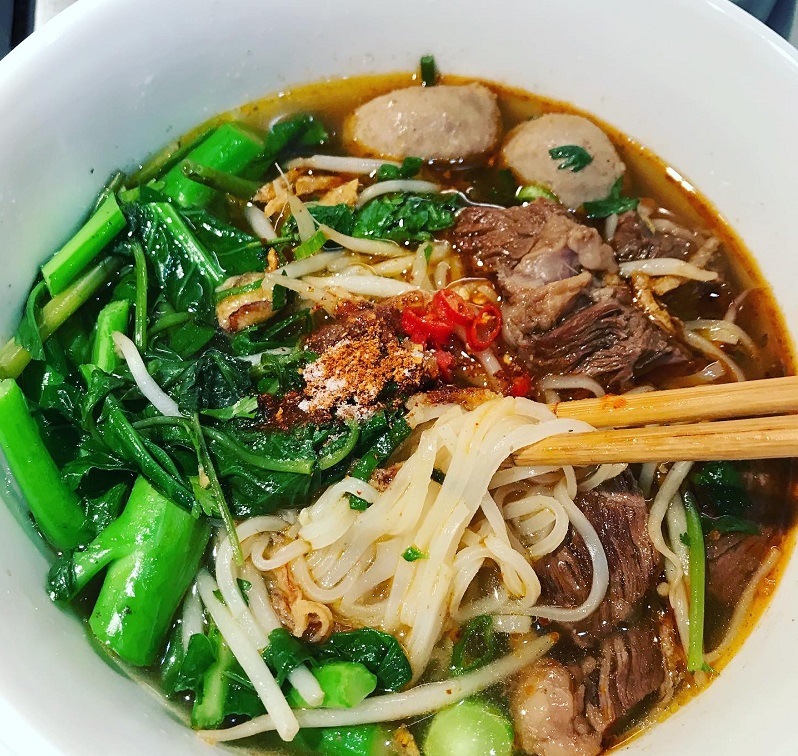
Thai Condiments - Salty, Sweet, Spicy, Sour
The Art of Adjustment to perfection ...
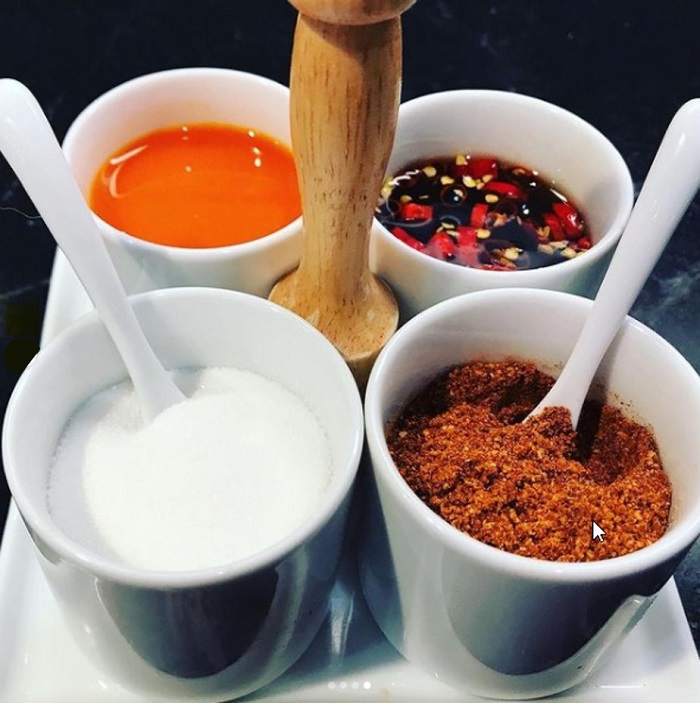
Ok, I would be doing this post (and every other Thai noodle post) a huge disservice if I did not talk about condiments. Thai people are obsessed with condiments, and many Thai dishes are made with the expectation that the consumer will make some adjustments, some how, in some way, to the dish that is served to them. This is not an insult, but rather an expectation.
This is where the trusty arrangement of condiments come in. Every noodle shop in Thailand (and any Thai restaurant worth its salt outside of Thailand) will have a condiments arrangement at the table (or at least offer it to you when you order noodles). Forget the boring salt & pepper – these condiments aren’t an afterthought. Instead, it is part of the ritual (or vicious cycle) of taste, season, taste, season, until (sometimes) the last bite.
In the Thai condiments world, salt is replaced with fish sauce which in addition to saltiness, also adds umami. Pepper is replaced with grounded dried Thai chilies or some times chili oil – we don’t go for subtleties here. Sour is in the form of vinegar, often combined or blended with red or green chilies. And of course sweet – after adding all that heat, you will need sweet to balance everything out with a touch of sugar.
The idea is that the dish you order will come “neutral”, but it is up to you to “perfect it” to your taste – for me this means adding an insane amount of chili (I mean a ridiculous amount), and a ton of chili vinegar. What can I say, I like hot and sour.
As kids, we always had fun tasting everyone else’s broth to see how much our tastes differed, at which point we would always poo-poo everyone else’s way of seasoning (“Ack! too salty that’s horrible!” or “Blech! too sweet how can you eat that!?”). I still do this today, including the poo-pooing of other people’s seasoning choices … some things will never change 🙂
About the Ingredients
The Noodles
Similar to pasta, noodles come in all kinds of variety – thick, thin, very thin, fresh ones, dry ones, ones made from rice, made from eggs, glass noodle, etc. For this dish, I recommend any rice noodle. In a Thai noodle shop, you will be given a choice; my personal favorite is thin rice noodle (the same noodle used in Pho), but you pick what you like. If you buy dried noodles, you can soak them in warm water for about an hour to rehydrate them before you dunk them in boiling water. If you buy fresh noodles (they usually come in a vacuumed sealed bag), this will take only a few seconds. Don’t over cook your noodles – remember it will be sitting in hot soup which will continue to cook them a little more.
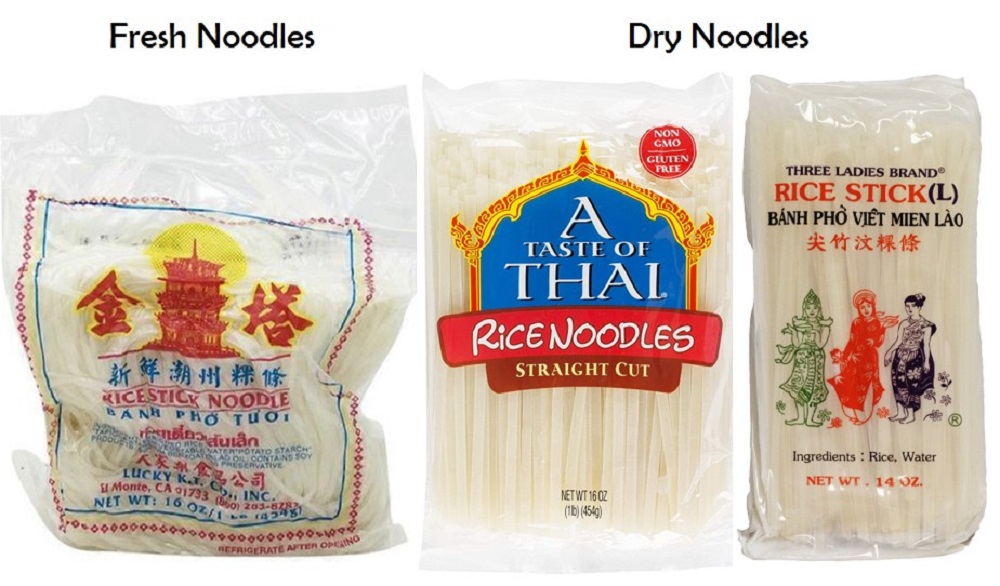
Galangal
Galangal is a close relative to ginger, but with a sharper, pepperier taste and a more citrusy aroma. While it is shaped like ginger, it has a different outer skin that’s tougher to peel (you can peel ginger with a spoon; you can’t with galangal) and has a denser more woodsy texture. That being said, it is often used in the same way as ginger in Thai dishes (added to soups and curry bases). They are very different and distinct however, and aren’t really interchangeable. Most Asian grocery stores sell galangal in the refrigerator section or occasionally you can find it frozen. You can freeze unused galangal for later – just remember to slice it up into pieces or chunks beforehand. If you cannot get galangal, I would just leave it out.
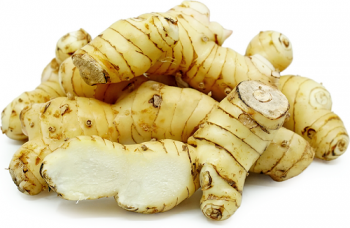
Golden MOuntain Seasoning Sauce
This is a quintessential Thai seasoning. If you plan to make a lot of Thai food, I would recommend you have this in your pantry. Golden Mountain seasoning sauce is very similar to Tamari or Maggi sauce. Its flavor is like soy but with a hint of sweetness. You should be able to find this on Amazon, but if you don’t have it, you can substitute with regular soy, Tamari, or even Bragg’s Amino instead.
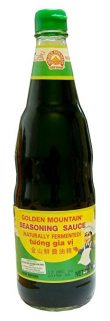
Sweet Soy Sauce
This is a thick sweetened soy sauce (think molasses thick & sweet). It is viscous and syrupy in consistency so getting some out of the bottle requires some rigorous shaking. This soy is used widely in Thai and Indonesian cooking (also called kecap manis) to add a rich dark color to soups, sauces, and noodles. The brand depicted here is the Dragonfly brand (there’s a dragonfly on the front of the label), which is the brand I use. Note that there is a blue top and blue label – there is another soy of the same brand with an orange top. For this dish you want to get the blue top one (although if you plan on making a lot of Thai food, the orange top one is good to have in your pantry as well).
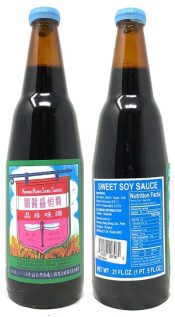
Star Anise
This is a spice native to north east Vietnam and southwest China. It often is added whole to soups and stews, and adds a licoricey-peppery flavor.
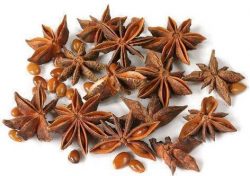
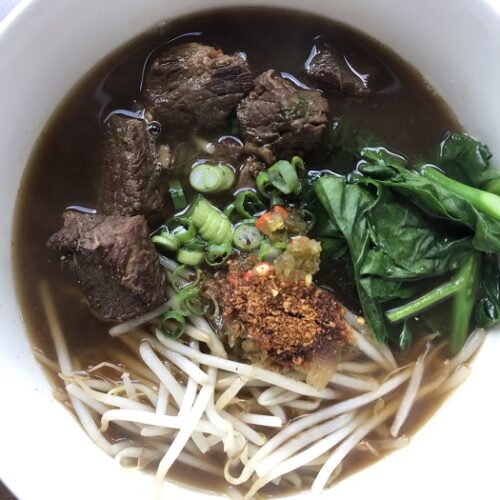
Thai Braised Beef Noodle Soup
Ingredients
- 3 lbs stewing beef, e.g., pot roast cut
- salt & pepper
- 13 cups water
Broth - Dry Ingredients & Aromatics
- 1 onion, quartered
- 3 celery stalks, quartered
- 1 handful cilantro
- 30-40g ginger, about 4 inch piece, thick sliced
- 30-40g galangal, about 4 inch piece, thick sliced
- 4-5 star anise
- 1 cinnamon stick
- 6 cloves garlic
- 1/2 tbsp ground coriander
- 1 tsp white pepper
- 3 beef bullion cubes, about 1½ tablespoon if powder
Broth - Wet Ingredients
- 1 tbsp fish sauce
- 1 tbsp sweet soy sauce, see post
- 3 tbsp Golden Mountain seasoning sauce, see post
- 1 tbsp soy sauce
Noodle & Noodle Topping for Final Assembly
- 1 packet rice noodles (dry or fresh, see post), about 4 oz. per bowl
- Asian vegetables e.g. Chinese broccoli (gai lan), Chinese spinach (On Choy), bok choi, etc. See notes, , about ¾ cup per bowl - see notes
- 3 cups bean sprouts, about ½-¾ cup per bowl
- Thai condiments , optional - see post
How I Make It
Brown the Beef
- Cut the beef into bite size chunks. Trim excess fat if you want, but be careful not to trim too much, otherwise the beef will end up dry in texture (yes, dry even in a soup). Season with salt and pepper and brown each side with a little oil in a hot pan or skillet. You may need to do this in batches to avoid over crowding (over crowding will prevent the beef from browning). They do not need to cook through, just browned. Set aside when done, and reserve any juice.
Make the Broth
- Put the browned beef and any juices into a large pot (big enough to hold all the liquid). Pour in the water and bring to a boil, then reduce to a simmer. Skim any foam that surfaces during the first 15 minutes or so of the cooking.
- In the meantime, gather all your broth ingredients & aromatics, and combine all the wet ingredients & seasoning into a small bowl.
- After the beef (broth) is at a steady simmer, and you've skimmed off any foam to your satisfaction, add all the broth ingredients.
- Let the broth come back to a boil, then cover and simmer for 2-3 hours, or until the beef is fork tender.
Assembling the Noodle
- When the beef is tender and ready to eat, begin prepping the final ingredients to assemble your noodle bowl. This goes quickly so it is helpful to have everything ready and within reach. You will need to make one bowl at a time.
- Cut the Asian green of your choice into bite size pieces and separate into individual; separate the stems from the leafy parts. Portion out your noodles. Portion our the bean sprouts. Put out the bowls you will be using and have them close by and ready. (see note).
- Bring a pot of water to a boil.
- Blanch the vegetable (about 45 seconds), noodle (about 5 seconds), and bean sprouts (about about 5 seconds) one portion at a time and place into each bowl. (see note).
- Remove some pieces of the beef from the broth and place into each bowl.
- Ladle the broth (over a strainer) into each bowl to cover the noodle (see note). Serve hot!
Notes
- If you go to an Asian grocery store, you will find a whole world of choices for Asian green vegetables; any thing that is firm and leafy will work. Western grocery stores typically carry bok choi, which works just fine. Worst case, you can use regular broccoli.
- When blanching the vegetables, if you are using Chinese broccoli or bok choi (or anything else with thick stems), blanch the stems first since they will take a little extra time. Overall it should not take more than a minute.
- Blanching the noodles should only take a few seconds (5-10 seconds), depending on if you've started off with fresh or dried noodles. If using dried noodles, rehydrate them first by letting them soak in warm water for about an hour.
- Assemble the bowls one portion (one bowl) at a time. For example, if I am making 4 bowls, I will blanch the vegetables - stems first then the leafy part for all 4 bowls, then blanch to the noodles (one portion at a time for each bowl), then same for the bean sprouts. Place the ingredients in each bowl as you go along. I blanch everything in a colander so I can easily remove when done, and the water can continue to be used to blanch the rest of the ingredients. Asian grocery stores will have colanders that are deep and narrow that are perfect for this type of work.
- The amount (ratio) of noodle to broth and other toppings is completely up to you. Some people want more broth and little noodle, others want the reverse, so you be the judge!

